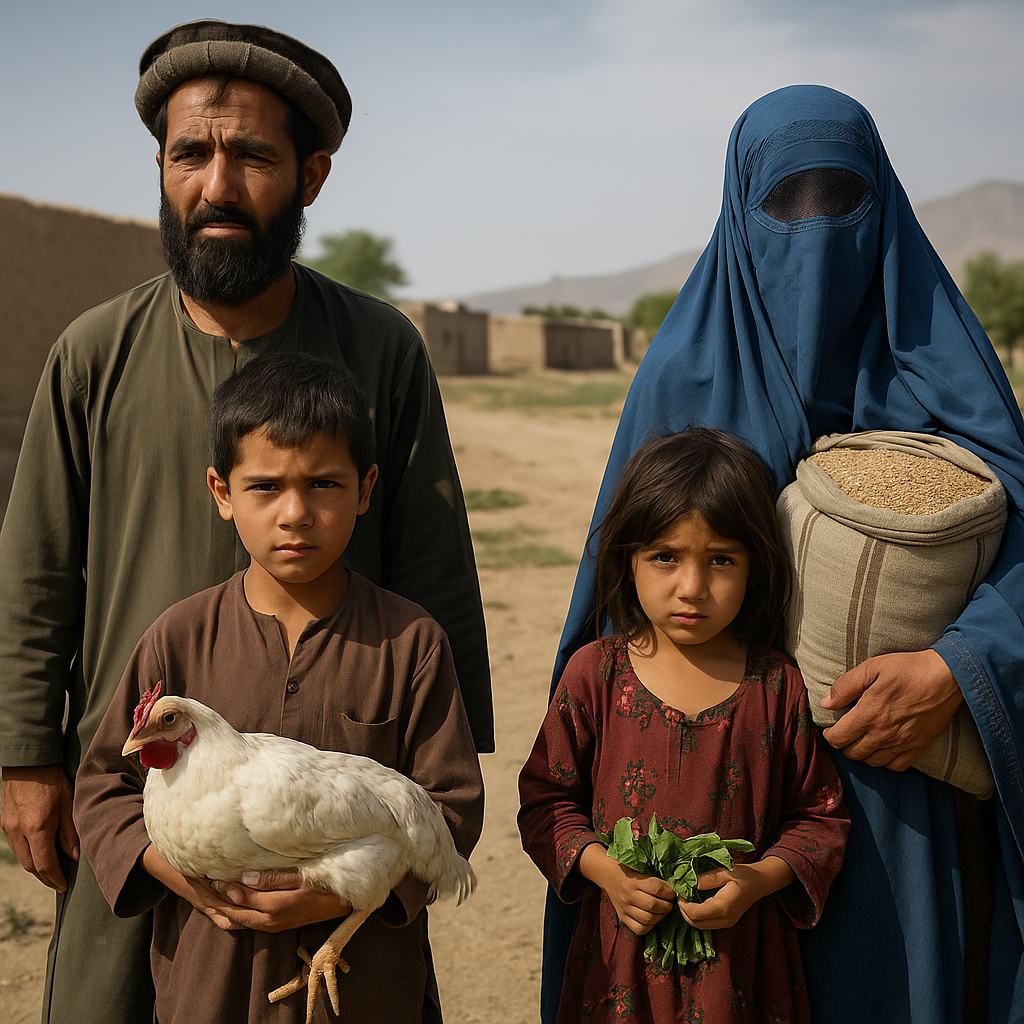Afghanistan’s fight against food insecurity: Why income diversification isn’t a silver bullet
Households with a broader range of income sources demonstrated greater resilience to disruptions in agricultural production, market shocks, or climate-related challenges. According to the regression models employed, each additional income source was associated with a measurable decrease in the likelihood of severe food insecurity.

Afghanistan’s rural communities remain dangerously exposed to worsening food insecurity, yet new evidence suggests that households with more diverse income sources are significantly more resilient. A comprehensive study conducted in Helmand Province, a conflict-affected region with high agricultural dependency, finds that income diversification plays a critical, though not standalone, role in mitigating the severity of household food insecurity.
The study, titled “Household Income Diversification and Food Insecurity: A Case Study of Afghanistan”, was published in the journal Foods. It explores how household income patterns, combined with socio-economic, cultural, and geographic factors, shape food security outcomes. Based on a robust survey of 302 rural households, the research presents statistical evidence linking income diversification to reduced vulnerability while exposing the limitations of this strategy when structural inequalities persist.
How strong is the link between diversified income and food security?
The study found that over 63% of households surveyed were severely food insecure, with many forced to skip meals or go entire days without eating. However, those with diversified income sources, ranging from non-farm employment to small-scale trade and handicrafts, were significantly more likely to be food secure.
Households with a broader range of income sources demonstrated greater resilience to disruptions in agricultural production, market shocks, or climate-related challenges. According to the regression models employed, each additional income source was associated with a measurable decrease in the likelihood of severe food insecurity.
Yet the analysis makes clear that while income diversification is statistically significant, it is not a cure-all. Many diversified households still reported high food insecurity, suggesting that structural and contextual constraints limit the strategy’s effectiveness.
What other factors influence household food security?
The study identifies a wide array of socio-economic, bio-socio-cultural, and locational variables that amplify or mitigate the impact of income diversification. Key among these is education. Illiterate households were far more likely to face severe food insecurity, and education emerged as a consistent predictor of a household’s ability to leverage diverse income streams effectively.
Land ownership was another decisive factor. Households that owned land had far better food outcomes than landless families. The presence of a relative with a government job provided a powerful buffer against food insecurity, likely due to more stable income and better access to resources.
In terms of household composition, smaller families with more male members (often seen as the primary income earners in this context) were less likely to be food-insecure. Conversely, households with more female members, particularly in environments where women have limited access to economic resources, were more prone to food insecurity.
Geographic isolation further complicated food access. Households located farther from district bazaars and provincial capitals experienced significantly worse food outcomes, primarily due to logistical and market access constraints.
Can income diversification work without structural reforms?
The data suggest that income diversification alone cannot compensate for entrenched socio-economic and structural barriers. Even households that pursued multiple income-generating activities, such as animal husbandry, contract farming, or handicrafts, were not immune to food insecurity when saddled with other risk factors.
The study advocates for a multifaceted intervention strategy. This includes:
- Expanding access to land ownership through land reform.
- Increasing educational opportunities for adults, especially household heads.
- Promoting female participation in income-generating activities, such as poultry farming, gardening, or tailoring.
- Enhancing market access via improved transportation infrastructure and rural road development.
- Offering microfinance solutions, including Sharia-compliant financial products, to enable investment in diversified ventures.
Importantly, the research highlights the role of government employment as a stabilizing force. Expanding public sector job programs could serve both as a direct income source and as a catalyst for community-level development and food system stability.
- FIRST PUBLISHED IN:
- Devdiscourse










